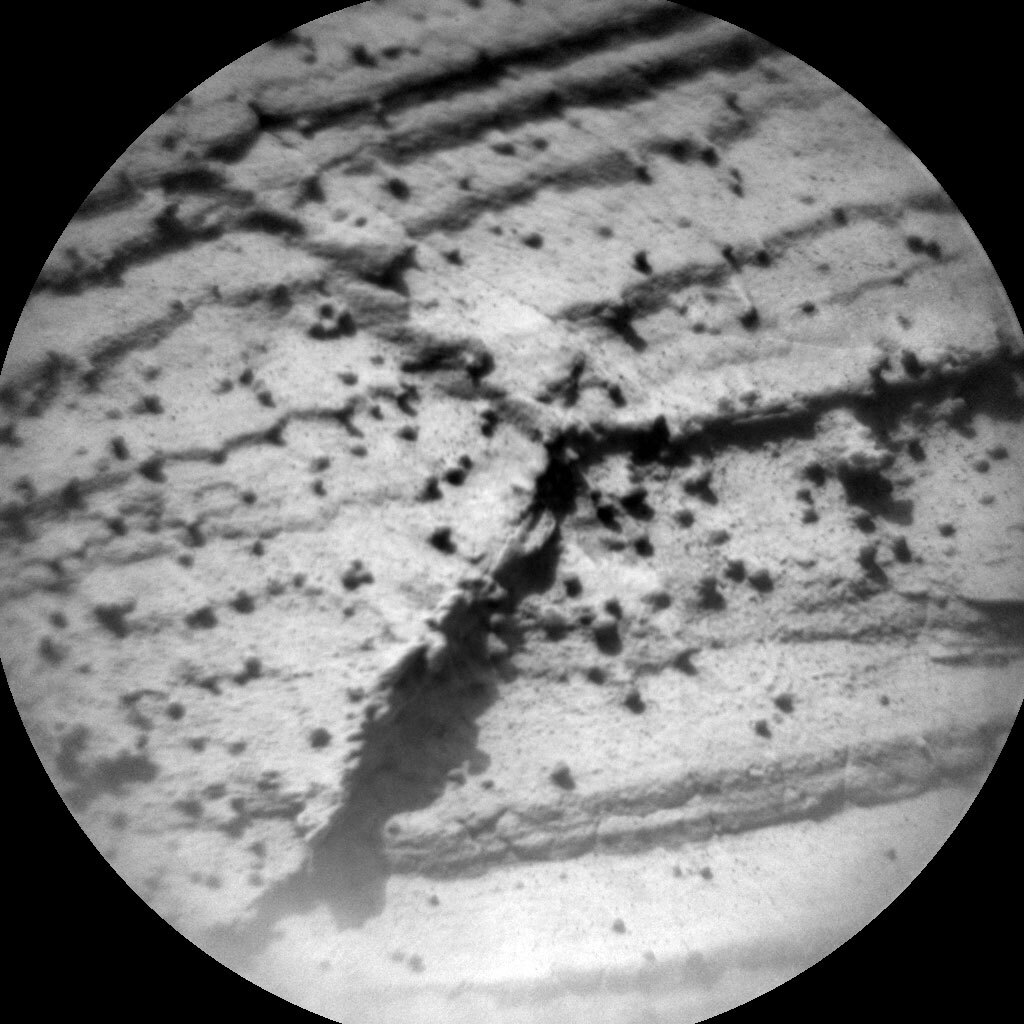3 min read

Earth planning date: Friday, March 8, 2024
As we previously documented, the first “Mineral King” drill hole did not quite reach the target depth that we typically desire to ensure that we have enough sample in the drill stem to deliver to our internal CheMin and SAM instruments. While we did get a successful X-ray diffraction CheMin analysis, we did not quite have enough sample left for SAM to be able to complete their Evolved Gas Analysis (EGA). The rover engineers selected a new potential drill spot on the same block, and this morning we got the results of the APXS, MAHLI and preload test (to check for stability and drillability) on that spot. While the chemistry and imaging indicated that it was a good candidate the preload test did not pass. The selected target was just a little too close to the rover. As the APXS strategic planner today, I reported the results of the APXS chemical analysis to the team; we were looking for the “Mineral King2” area to have a similar composition to the first drill target. We found out about the failure of the preload test as we were ready to deliver our preliminary plan, but we are all used to reacting to the surprises that Mars occasionally sends our way! The science, engineering and uplink teams did an excellent job responding to the sudden change of plans and we managed to come up with a homerun, version 2 of our plan to accommodate the late-breaking news, taking advantage of the extra power and time available to us, given that we were not proceeding with drilling!
The geologists planned ChemCam LIBS on two targets, “Vernal Falls” and “Unicorn Peak,” which will also be documented with Mastcam. The two targets are on a nearby polygonally fractured block, the same block as the previous “Roaring River” target. ChemCam will also utilize its remote imaging capabilities to continue looking at the layering in the “Texoli” butte and the chaotic structure within the nearby Gediz Vallis deposit (see my previous blog for rationale). We are taking advantage of the unexpected bonus time and power to cross a few Mastcam liens off our list. Mastcam will extend imaging in and around the “Cottonwood Pass” and “Mount Carillon” areas to provide more context to the Mineral King drill site and surrounding area. We are also acquiring a MARDI image to monitor how the wind might be moving sand and dust around as we remain parked at this location.
All that extra power and time meant that the environmental scientists were able to plan a glutton of observations, especially useful right now as Curiosity is in a dust storm watch scenario, as dust activity increases on Mars. Environmental Navcam observations include line of sight observations, two dust movies, two 360° sky surveys, as well as zenith and suprahorizon movies. We are also acquiring Mastcam tau and sky column observations, as well as planning coordinated ChemCam passive sky and APXS atmospheric activities. The plan is not complete without the standard REMS, DAN and RAD activities.
The rover engineers have found another viable spot on the same block as “Mineral King,” a bit further from the rover, so we will probably try our triage drill activities on the new target when we resume planning next week. We are all hoping for a more successful outcome than for Mineral King2.
Written by Lucy Thompson, Planetary Geologist at University of New Brunswick







